Reading time: 20 minutes
(If you missed the New Year’s Rugby Special, click here…)
As it was…
It’s Saturday, January 14, 1978. Donna Summer has released her ‘Greatest Hits’ album. That week, Bobby Charlton opened the hugely successful ‘Discover Cornwall’ tourism exhibition in Manchester1.
In the CRFU Merit Table, third-placed Camborne are hosting the leaders, St Ives.
It’s a must-win for both sides.
Tight…
As we discussed last week2, Camborne had tweaked their formation, moving Bob Lees to the wing, recalling David May at centre, and – the big change – starting Nigel Pellowe at 10.
This reflected Chris Durant’s desire to keep matters “tight” for the big game: half-backs Mankee and Pellowe would, by the physical style of their play, act like extra flankers in a pack-oriented attack.
You can appreciate Town’s risk-free tactics and a wish to play to their big strength. If they lost, the Merit Table went with it.
Although Dave Kingston said that Camborne “were always up for” a clash with St Ives, even the ten year-old ball-boy, Mark Warren, knew full well that ‘The Hakes’ were Town’s “bogey” team.
But there was no need to worry.
This was Tanzi Lea’s game.
Goldenhands…
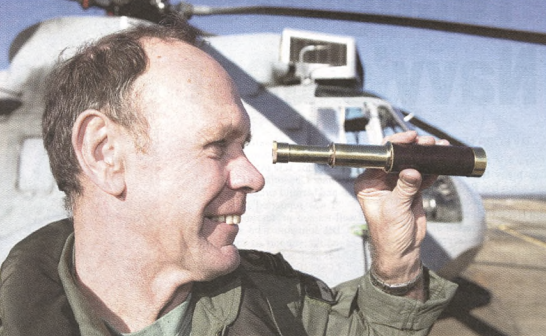
Lieutenant Commander Paul ‘Tanzi’ Lea joined the Royal Australian Navy from the Royal Navy in the 1990s. He became one of the RAN’s most experienced helicopter pilots, being involved in counter-terrorism operations, a Gulf deployment, fire and flood relief, and tracking nuclear submarines4.
Now retired, he leads a quiet life in New South Wales as a volunteer fireman.
As a rugby player, he represented the Royal Navy at Twickenham (the Duke of Edinburgh presented him with his cap), captained the Combined Services, and once played the All Blacks. “We came second”, he told me.
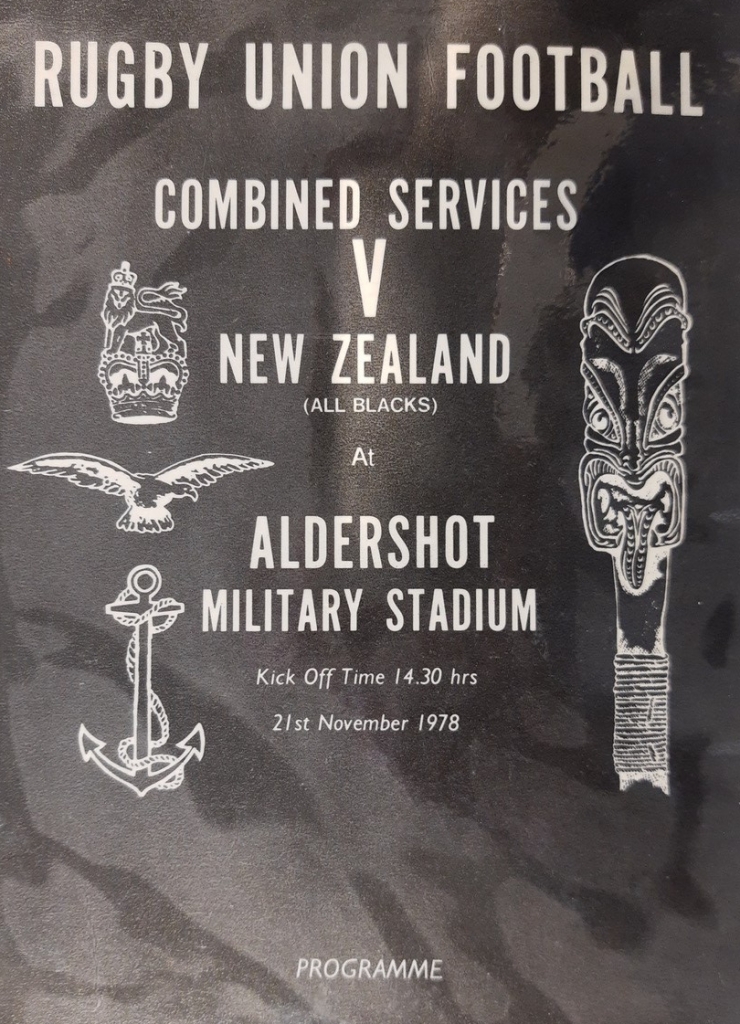
As you can probably imagine, such an adventurous nature was reflected in his play.
Frank Butler recalls that Tanzi was
…always wanting to run everything…
and his high-risk game was not always appreciated by Camborne’s pack. In fact, Frank continues, even Cornish fans of the era frowned upon running rugby – which gives you some idea of how matches were played then.
However, for this particular match, Tanzi was moved to 15. By his own admission, this was his favourite spot:
…where you could express yourself more…
Tanzi himself realises his style went against the grain of Cornish rugby in general, and Camborne rugby in particular. Today he reckons that coach Alan Truscott was given “grey hairs” by him merely
…running around, holding the ball in one hand…
Maybe he was, but Truscott knew talent when he saw it. He describes Tanzi as “unpredictable”, with
…outstanding attacking flair. Class…
“Goldenhands”, was Robert Mankee’s name for him; Paul Ranford remembers him as “flighty”, and Frank Butler acknowledges his qualities:
As a full-back he was ahead of his time as he ran a lot more than he kicked, and caught a lot of teams out with his pace and running ability.
Tanzi was a wildcard, x-factor kind of player: on his day, a matchwinner. Here he was finally given the freedom he craved, at full-back. Camborne had previously handed him several starts at 10, but now, at 15, against St Ives, he was the point of difference in a game where
Very little was tried or ventured…
Packet, January 18, 1978
St Ives were stymied. Slowly throttled by Camborne’s pack, their successful tactics earlier in the season, to kick up-and-unders at Town’s full-back under dodgy floodlights5, would not foil their hosts today. Indeed, whenever they did kick long, Lea would nonchalantly scoop the ball up, check where the cover was, and go for the jugular.
In fact, Tanzi was rampant, and threatened to score more than once. He broke clear to put Dave Edwards (also a menace for St Ives that day) in for a try with a chip ahead, and had the winning score himself.
Mankee, with a copyright blindside break, slipped Lea the pass. In space, with broken play ahead of him, Tanzi was only ever going to score.
Make no mistake, this was a massive win for Camborne:
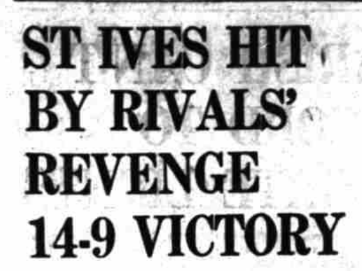
Though The Hakes were still top, Town were
…now within easy striking distance should St Ives falter again.
West Briton, January 19, 1978, p20
St Ives would also have to win the Merit Table without their star flanker Peter Hendy: he had broken an ankle during the game, and would be out for the rest of the season.
Suddenly, Camborne were back in the hunt.
David May, recalled for Town at centre, had played his own part in the victory too. When Tanzi made his break to put in Edwards, May assisted by
…illegally pulling back [a St Ives player]…He backhanded me with his fist, splatting my nose and dropping me to the floor…
May pulled himself off the turf, wiping blood and snot from his chacks, just in time to see Edwards touch down.
Funny, but I can’t recall David May ever showing me that particular move when he taught me rugby at school…
Mr May…
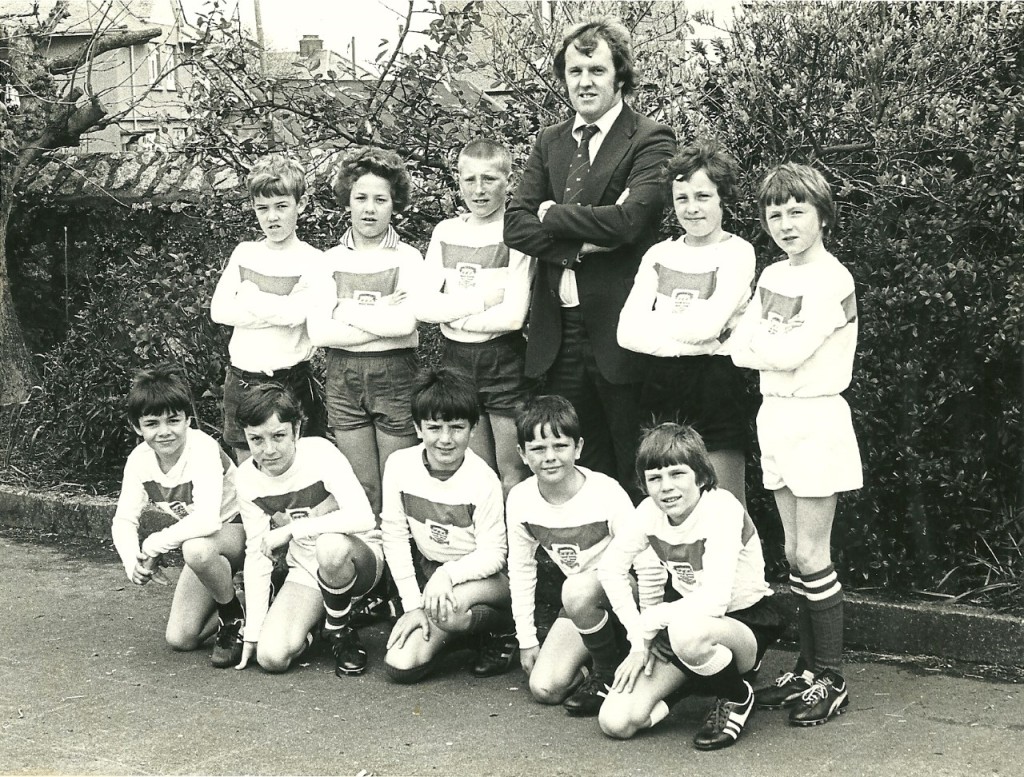
Frank Butler told me that David “hated” his nickname at the time, so I won’t repeat it here. In any case, his moniker is almost as well-known in Cornish rugby circles as the fact that he devoted most of his adult life to the game, both as a highly successful coach of youth teams and, later, as a respected referee.
In fact, many of the youngsters he coached – myself included – would be surprised to know he was also an integral part of Camborne RFC’s Centenary XV. (That said, how many kids believe their teachers only exist in school?)
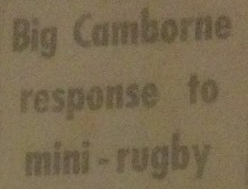
In 1978, though, all this was in the future, but May had already laid the foundations for Camborne’s mini and junior rugby section. At the inaugural session in 1977, over a hundred keen-as-mustard children showed up, leaving May in a state of “shock” at the level of interest. He continues:
Tens of youngsters would eventually move on to play senior rugby…
Make that County rugby too. Cornwall representatives such as Dave Weeks, Tommy Adams and Darren Chapman were all minis at Camborne RFC.
On the pitch, what qualities May brought to to the Centenary XV are not as clear-cut as some of the more prominent players. Frank Butler admits he was criticised for allegedly being
…the slowest centre ever to play for Camborne…
Chris Durant also noted that May’s confidence was often in need of a boost. May himself confesses
I was famous for always coming off with the cleanest shirt! I wasn’t a hard man or a great tackler…definitely not one of the stars…
However, this was an XV chock-full of hard men and great tacklers – one more or less wasn’t going to make much difference. David may not have had the fastest legs, Frank Butler continues,
…but he had the fastest brain. [May was] dependable and a great talker in the match to help make decisions…
His chattiness during play proved he was a “typical teacher”, reckoned Malcolm Bennetts.
In defence, May in fact would act like a modern 13. As part of a back line that moved up very quickly, he
…would go up just ahead of the others to stop my opponent even getting the ball…
In other words, May would kill off the opposition’s attack, forcing them back inside to face Town’s hard men and great tacklers, including Butler, Kingston, Taylor, Mankee, Pellowe…
On the offensive, May was well aware that he
…had a brain, and used it…
He regularly called the miss-moves in the threequarters, and Alan Truscott acknowledges his
…good hands and timing of the pass…
He was certainly the kind of 13 wing Bob Lees preferred,
…an impact player,
capable of putting the wide men into space and leaving them to do the rest. I give the final word to Launceston’s wing, Mickey Stephens, who saw him in action on many an occasion. David May was an
…underrated man…
Underrated, that is, by those who only watched him play. Not by his team-mates or those who played against him.
As we shall see, he wasn’t all that slow either.
Pellowe for all places..?
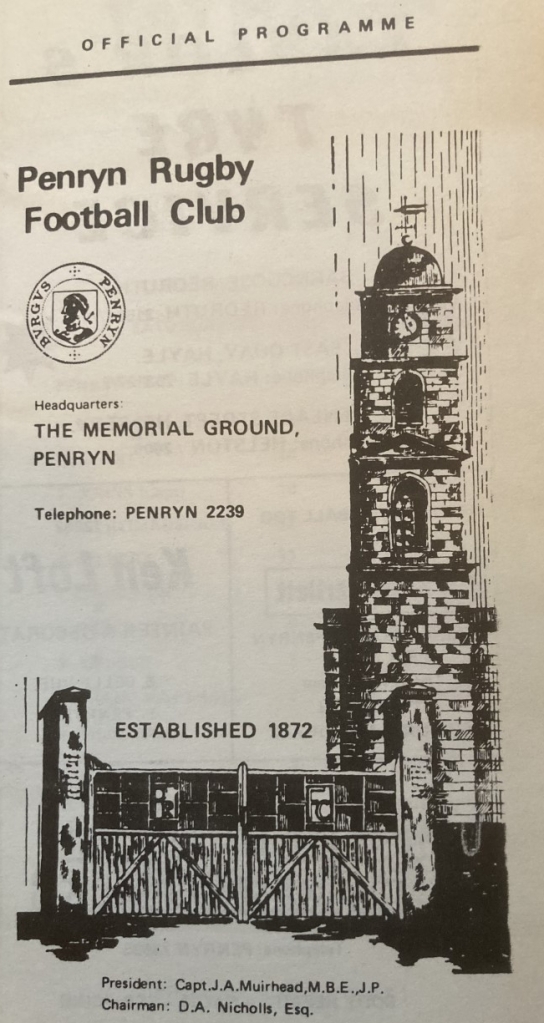
Next Saturday, the 21st, Town travelled to Penryn, winning what must have been an underwhelming game 0-10. A Mankee try and two Durant penalties gave them victory.
Their hosts were so devoid of attacking options that, at one point, Paul ‘The Boot’ Winnan attempted a penalty kick from the Paul Thorburnesque range of sixty metres. “Miracles” were in short supply that day, and The Boot’s effort fell short6.
Obviously both sets of outsides had had an off-day, but the journalist Jerry Clarke was particularly scathing of Camborne’s threequarter line. His article in the Packet went out under the following headline:
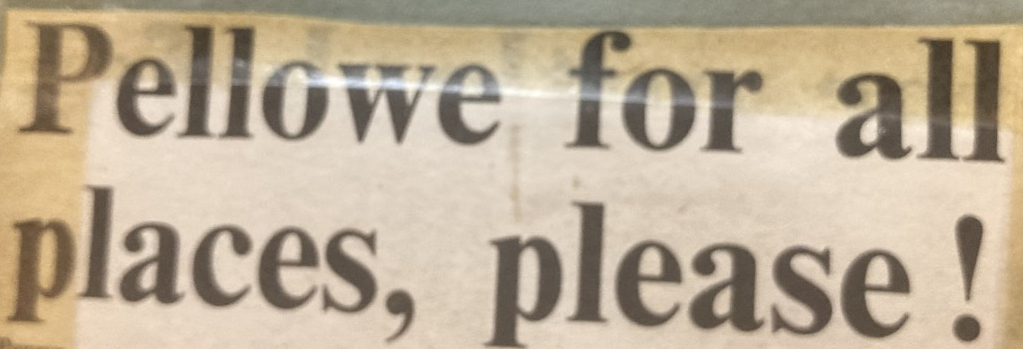
In his piece, Clarke praises fly-half Nigel Pellowe as Town’s “threequarter star”, but added that
…Camborne have nobody of note – with the exception of Pellowe – outside their outstanding pack of forwards.
Jerry Clarke, Packet, January 25, 1978
That Pellowe distributes the ball wide from 10 so rarely, Clarke reckoned, is simply because there’s no one worth passing to.
Here we have it, the big myth of Camborne’s late-1970s rugby: a huge pack, little else.
(Clarke, of course, is trying to have it both ways. In another article he wrote that proper Cornish rugby is a game where “threequarters are mere spectators”7.)
In his piece, Clarke seems unaware of Camborne’s tactical change in moving Pellowe to 10, and forgets that Mankee and Edwards, both playing that day, were good enough for the Cornwall U23s8.
Although Bob Lees describes Camborne’s back line as “not that dynamic”, and Robert Mankee says Town “never had great, fluent outsides”, Frank Butler reckons that the forwards
…did the donkey work but the backs delivered the finishing touches and were very underrated. We scored lots of tries and most attacking moves were started by the backs…
David May takes up the cudgels:
…our backs were the equal or better than any in the county. We scored some brilliant tries but, when the tough games came around, we played 10-man rugby…We feared no other back line…
Dave Edwards and, most importantly, Chris Durant agree. For the big games, said Durant, Camborne would
…keep it tight…
What kind of game Camborne played depended on the context of the match, and the quality – or otherwise – of the opposition.
As for Nigel Pellowe, well, he was only doing his job, and never let it be said that the man lacked flamboyance. Malcolm Bennetts recalls a time when Pellowe threw a dummy pass and, with some dexterity, hid the ball behind his back, making his opponent look foolish.
Nigel also points out that, as Camborne’s pack was so strong, and so dominant, any back-line would look ordinary in comparison.
In brief…
Speaking of tight, in the Merit Table, St Ives beat St Austell that same Saturday to stay top, but Redruth lost to Falmouth. Suddenly, the business end of the Table looked like this:

The return of Derick Taylor…
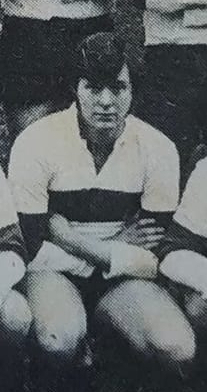
Tanzi Lea (Navy), and Steve Floyd (University) were unavailable. The Pellowe-at-10 tactic had paid off – but was it a permanent ploy?
Fortunately for Camborne, Derick Taylor suddenly made himself available. Though Chris Durant recalls him as “temperamental” off the pitch, on it he possessed a cool head, good distribution, said Bob Lees, and a massive boot, either from the spot or out of hand. In the previous season, Taylor had amassed a record 193 points in 24 games9.
Such a man was obviously a shoo-in at fly-half for the tough games that lay ahead.
The Merit Table game at Launceston on the 28th was the ideal opportunity to bed Taylor in. Before the emergence of Graham Dawe, Launceston’s pack were weak, and they currently sat at the bottom of the Table. Town also gave a game to the Reserves’ flanker, Mike ‘Delme’ Thomas.
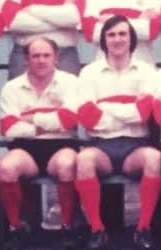
Camborne won easily enough, 0-10. And then…
St Ives slip at Hayle…10
Maybe the injury to Peter Hendy, and the loss to Camborne, had dented St Ives’ confidence. Maybe Hayle had found a way to beat them. Whatever the reason, and on a weekend of “atrocious”11 weather, The Hakes slipped, losing 7-0.
With Redruth not having a league fixture, the top of the Table now looked like this:

That’s more like it. Starved of decent away trips all season, (Frank Butler described any and all away journeys as “wild”), the journey home from Launceston would have been, shall we say, jubilant.
Elsewhere…
In other news, St Austell had progressed to the semi-final of the CRFU Cup, beating Redruth Grammar School Old Boys 57-012.
They’d no doubt lose to Penryn in the semis anyway.
Did I mention the CRFU Cup? In three days time, Camborne travel to St Ives for yet another crunch game…it’s their quarter-final match-up…
Read all about it in Rugby Special ~ Part Nine here…
Many thanks for reading
References
- From the West Briton, January 12, p2.
- See New Year’s Rugby Special here.
- From Navy: the Sailors’ Paper, Vol. 49, No. 9, 2006, p7.
- From Navy: the Sailors’ Paper, Vol. 49, No. 9, 2006, p7.
- See Rugby Special ~ Part Five here.
- Packet, January 25, 1978.
- Packet, March 22, 1978.
- West Briton, February 2, 1978, p18.
- From the Camborne RFC Centenary Programme, by Philip Rule and Alan Thomas, 1977.
- West Briton, February 2, 1978, p18.
- West Briton, February 2, 1978, p18.
- West Briton, February 2, 1978, p18.
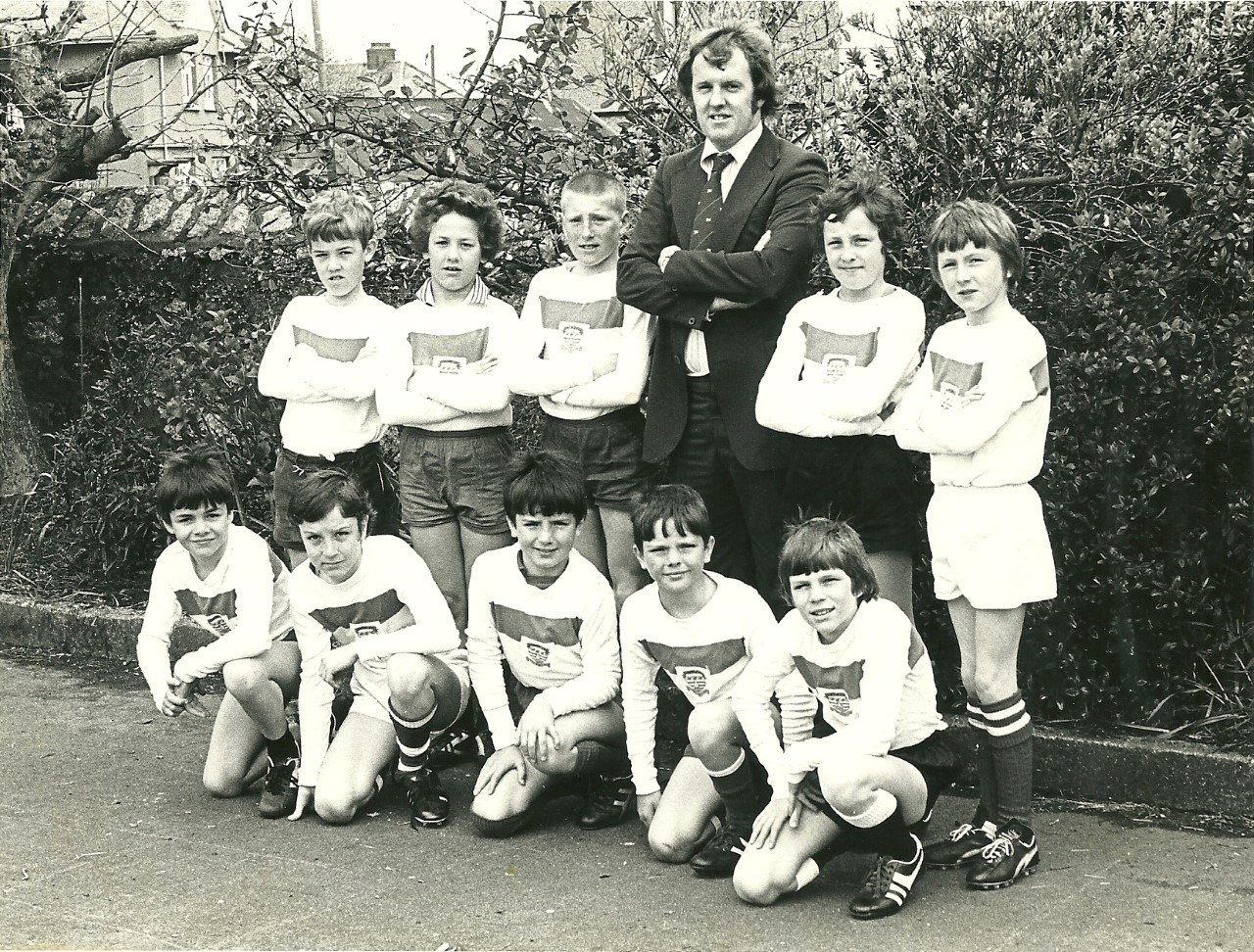
Excellent. Great memories.
LikeLike
Very enjoyable Francis, really bringing that year to life. As regards my pace, I remember a flanker friend in the reserves, repeatedly telling me he was faster than me, so eventually we raced off after training with everyone watching, and with beer on it. He came a distant second! Derek Taylor, still a good friend, was so laid back but very talented with great feet. Before one big game, Jock Denholm threatened to hit Derek as we were calmly discussing horses and which ones we had bet on while Jock was preparing to kill someone. Takes all sorts!
LikeLike
Haha, thanks David – we’ll see how fast you are next week…
LikeLike
Well done Frances great read once again
LikeLike
Cheers pard!
LikeLike
Brilliant Fran. This is a really great series of articles.
LikeLike
Cheers mate
LikeLike
I am really enjoying reading these clips from a brilliant era of being a cherry and whites fan.
Thanks very much Francis
LikeLike
Great to hear, thanks
LikeLike
Excellent article Francis, reviving great memories of a wonderful era.
LikeLike